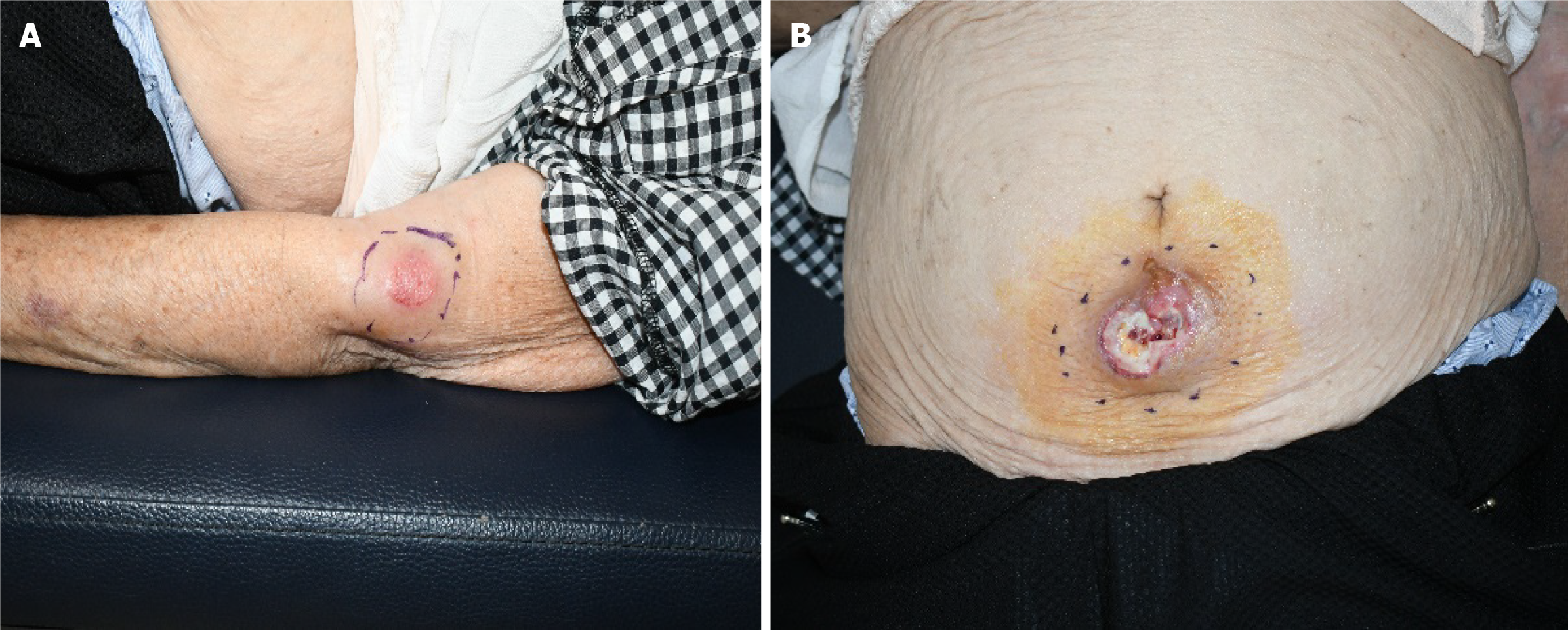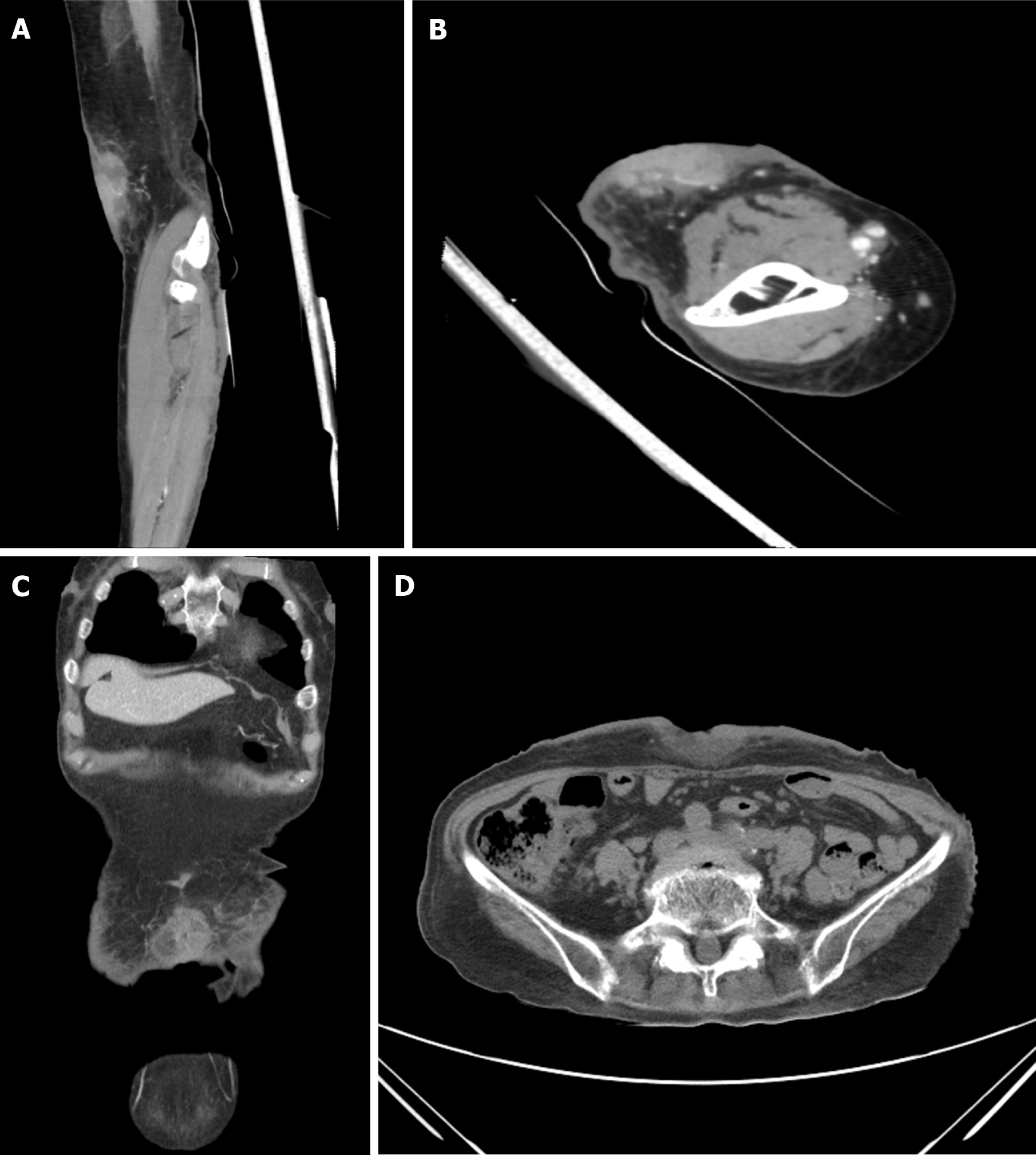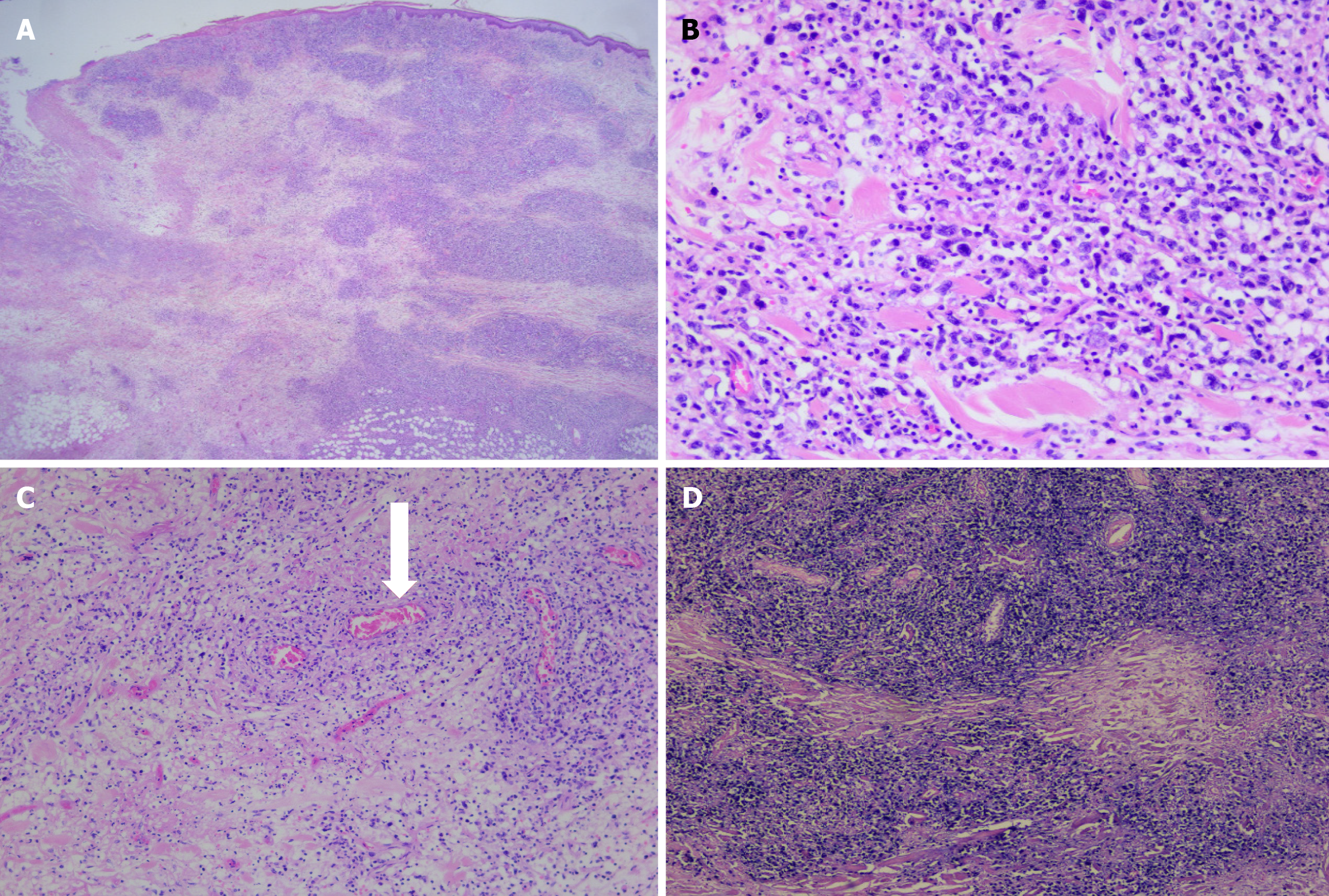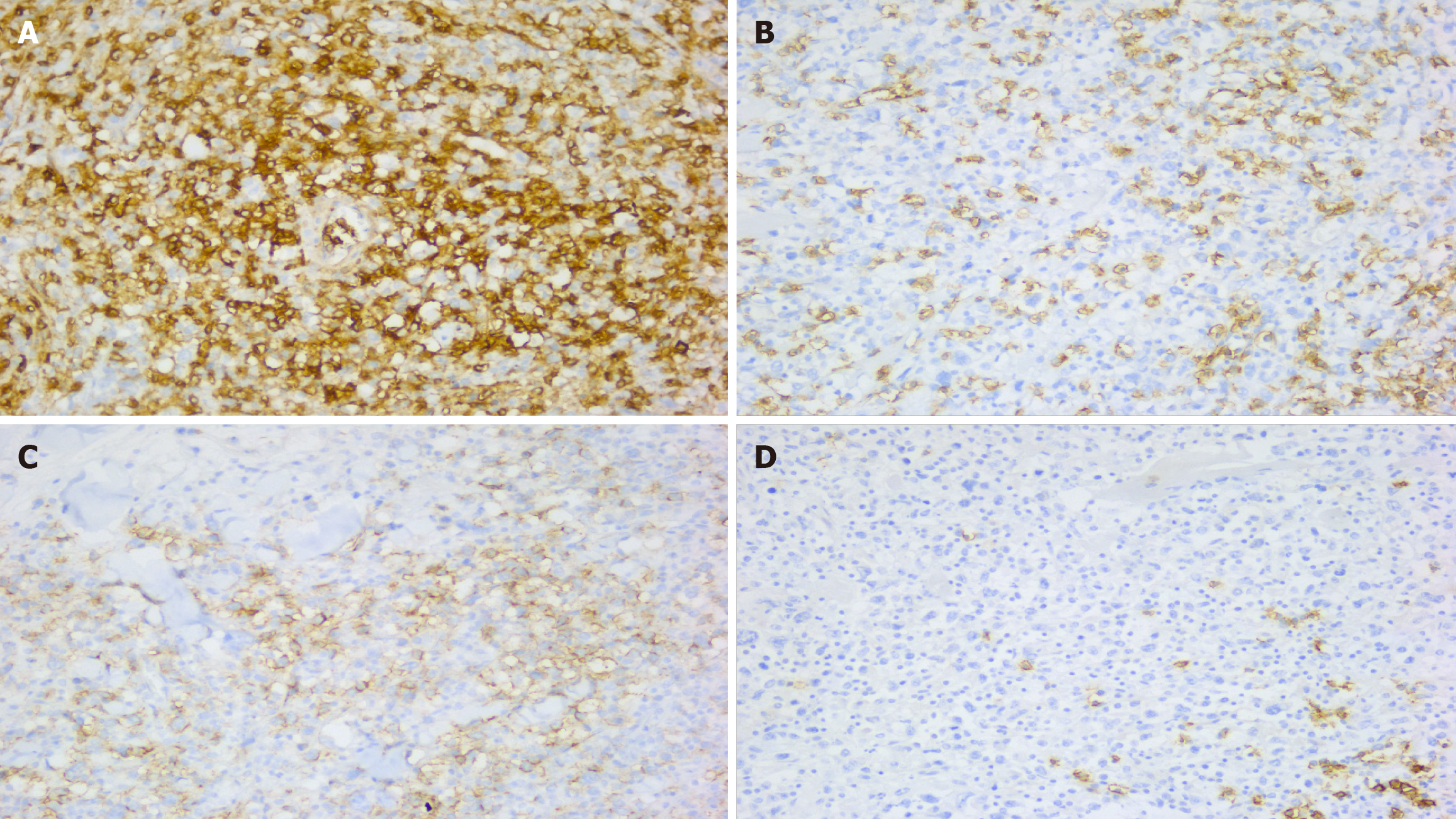Copyright
©The Author(s) 2024.
World J Clin Cases. Nov 6, 2024; 12(31): 6486-6492
Published online Nov 6, 2024. doi: 10.12998/wjcc.v12.i31.6486
Published online Nov 6, 2024. doi: 10.12998/wjcc.v12.i31.6486
Figure 1 Preoperative condition.
Preoperative view of an 89-year-old female patient with diabetes and hypertension. A and B: A 4 cm × 4 cm tumor and a 3 cm × 3 cm skin defect on the arm and a 9 cm × 5 cm tumor and a 1.5 cm × 1.5 cm skin defect in the abdomen.
Figure 2 Contrast-enhanced computed tomography images.
A and B: A 2.9 cm × 1.8 cm × 4.9 cm tumor in the left arm with a deep subcutaneous layer enhancement and invasion pattern; C and D: A 4.7 cm × 4 cm × 0.7 cm soft tissue defect in the central abdomen below the umbilical button; No signs of cancer metastasis.
Figure 3 Morphologic and vascular features of tumor necrosis.
A and B: Microscopically, in the background of multifocal geographic tumor necrosis, highly pleomorphic lymphoid cell infiltration is noted; C: Vascular invasion with surrounding necrosis is identified and marked with white arrow; D: In situ hybridization for Epstein–Barr virus-encoded RNA (EBER) showing reactivity (A: H&E, × 5; B: H&E, × 20; C: H&E, × 10; D: EBER in situ hybridization, × 20).
Figure 4 Immunophenotyping of tumor cells.
The tumor cells are reactive for CD4 and CD56 but negative for CD8 and CD20. A: CD20, × 20; B: CD8, × 20; C: CD56, × 20; D: CD20, × 20.
- Citation: Kim JM, Choi WY, Cheon JS. Diagnostic and management challenges in primary cutaneous anaplastic large cell lymphoma with necrosis, inflammation, and surgical intervention: A case report. World J Clin Cases 2024; 12(31): 6486-6492
- URL: https://www.wjgnet.com/2307-8960/full/v12/i31/6486.htm
- DOI: https://dx.doi.org/10.12998/wjcc.v12.i31.6486












